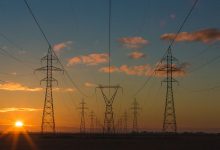State governments and transmission companies have been warned to not repeat the early mistakes of wind and solar farms as they seek the social licence to build major transmission zone to support the massive amounts of new generation planned for new Renewable Energy Zones.
A new report from the RE-Alliance says securing community support for new transmission projects will be essential to the success of REZs, and it explains how governments system planners and network companies can build trust.
“Local rural communities affected by new transmission infrastructure, and other stakeholders, deserve to be able to participate in how these projects are deployed and derive benefits from this new infrastructure and not just bear its costs and localised impacts,” the report says.
“These communities have argued that consideration of social and environmental impacts of new transmission projects needs to be more robust and take place earlier in the planning process.”
Report author Kate Healey says the energy industry is plans for Renewable Energy Zones – which will pair new wind and solar projects with network developments – mean that many regional communities will soon be asked to host major infrastructure projects.
“We’re at a critical point upgrading our transmission network to carry the huge influx of solar and wind power that will be added to our grid over the next decade. It’s been over 40 years since our country has seen this kind of infrastructure rollout,” Healey said.
“We need to make sure we bring local communities in sight of the planned lines along for the ride. While the majority of people are supportive of renewables, they don’t often get that we have to build a way to carry the electricity to where it’s needed.”
Early wind farm developments often suffered from persistent opposition from some local communities – particularly from nearby residents that lived near wind turbines but received no financial compensation from the wind farm’s operators.
Opposition often led to the spread of misinformation about wind turbines and their potential health impacts, which often hampered the success of subsequent projects. Research and experience made clear that early and meaningful community engagement ahead of a project’s consultation was highly effective at addressing community concerns.
In making a number of recommendations on how to manage the development of new network infrastructure, the RE-Alliance drew parallels with the lessons learnt by wind farm developers and the importance of engaging with local communities to build and maintain support for new energy projects being built in their area.
In its report, the RE-Alliance recommended that network companies be proactive in their engagement with local communities set to host new transmission network infrastructure and “that transmission companies consider moving their consultation style from one of inform, consult, or involve to more actively collaborating and empowering their local communities.”
The group also said that there was a key role of regulators, particularly the Australian Energy Regulator, which oversees expenditure on new transmission network projects, to ensure network companies are well placed to consult with local communities on the placement of infrastructure and to adequately compensate landholders.
The RE Alliance recommended that the RIT-T process, overseen by the AER, be expanded to allow for “social and environmental costs and benefits on local communities” to be included in network investment determinations.
The group said there was a risk that network companies were making the same mistakes as early wind and solar developments, particularly in regional areas where new major transmission network links were being constructed to support the development of new renewable energy zones.
“Landholders are watching farmers be generously and annually compensated for the wind turbines and solar panels they host on one hand, but not the big poles and wires that need to be built to connect the renewable energy zones to the grid,” Healey said.
“Many farmers point the finger at the transmission companies, TransGrid or AusNet, and they certainly could be doing more. But they are constrained, particularly when it comes to landholder payments, by a regulatory regime that prioritises efficiency and cost-saving to energy consumers above all other considerations.”
Some transmission network projects are already experiencing opposition from local communities, including the Western Victoria Transmission Network Project being developed by AusNet and Tasmanian transmission line upgrades related to a new wind farm development in the state’s northwest.
Transmission upgrades needed to support the development of the Snowy 2.0 project in the Kosciuszko National Park have also attracted opposition from environmental groups for their ecological impacts on the national park.
The RE-Alliance said that it would continue to develop its recommendations through consultation with key stakeholders and advocate for their implementation.
“Our report outlines the actions that governments, energy regulators and transmission companies need to take in order to ensure impacted communities can actually benefit from—not simply tolerate—new lines,” Healey added.










